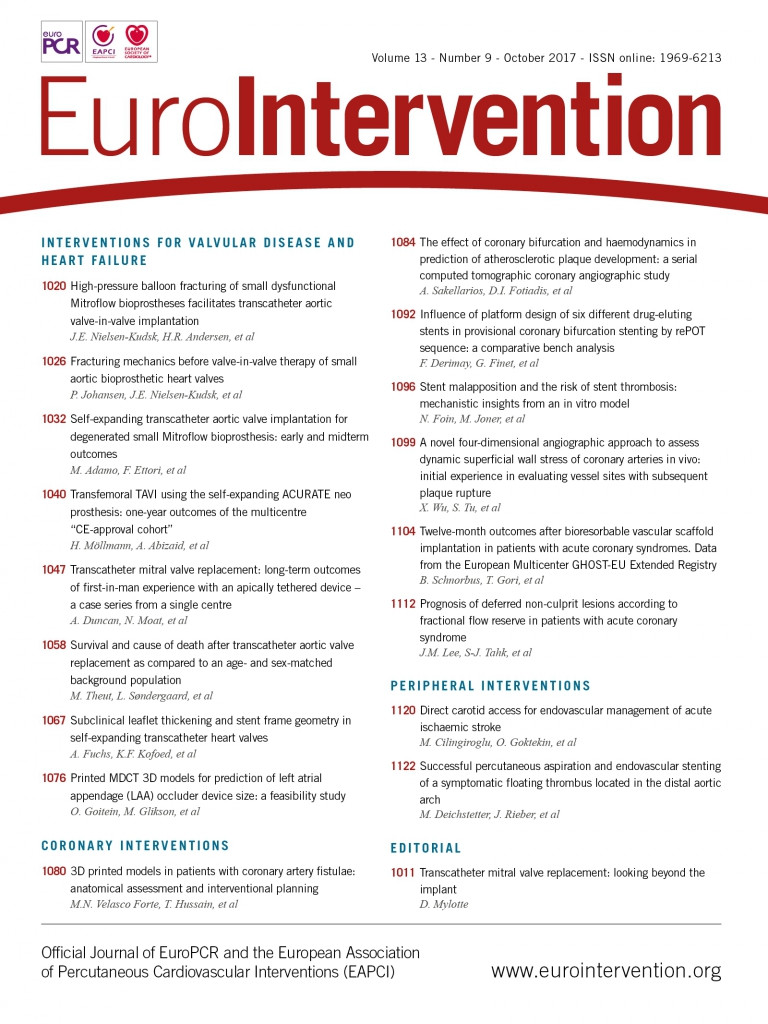
We read with great interest the letter to the editor by Toutouzas et al and agree with the stated limitations regarding radiofrequency (RF)-mediated renal denervation as performed in studies using a single electrode RF catheter in the manner applied in SYMPLICITY-HTN 3, including the potential for vascular injury. Of equal importance, however, is the probable technique-dependent efficacy. It is possible that the limited tissue injury depth that can safely be achieved with RF ablation without protection of the intima in the main stem renal arteries together with the limited number of ablations contributed to the absence of a blood pressure-lowering effect in SYMPLICITY-HTN 31. The recently announced interim results of the SPYRAL HTN-OFF MED trial2 may support this hypothesis. In this randomised sham-controlled trial in patients off antihypertensive medications, a blood pressure-lowering effect was seen in patients treated with RF ablation predominantly of segmental renal arteries using a larger number of ablation points than in prior randomised trials using a single electrode. Apart from patient selection and other factors, one reason may have been more complete renal nerve injury in segmental renal arteries due to the closer location of the renal nerves to the arteries in this location3 compared with the main stem renal artery. This may support the notion that more complete denervation may lead to more pronounced blood pressure lowering. Herein lies the potential advantage of perivascular alcohol infusion compared with RF-based renal denervation, i.e., deeper tissue injury4 reaching the majority of renal sympathetic nerves (in a more circumferential manner4), allowing more complete renal nerve injury while limiting injury to the vessel wall. Though vincristine may be used to cause nerve injury including the renal sympathetic nerves, there are several important distinctions, regarding both the potential systemic effects of the agent used and the methods of delivery to the renal sympathetic nerves comparing the concept described by Stefanadis et al5 and the Peregrine System™ Infusion Catheter (Ablative Solutions, Inc., Kalamazoo, MI, USA)6. First, while the systemic concentration may be low and neurotoxic effects at sites other than the renal artery unlikely, data regarding the safety of vincristine even in very low systemic concentrations are limited, whereas, in the amounts used by the Peregrine System (total of 0.6-1.2 ml for both renal arteries), even if all entered the systemic circulation, the effects of alcohol would be comparable to consumption of far less than a glass of wine. Second, the delivery of alcohol by the Peregrine System occurs by injection via ultra-fine needles entering the renal artery adventitia and immediate surroundings in a predictable and circumferential manner whereas the delivery of vincristine as described by Stefanadis et al is achieved via an inflated balloon5, potentially risking intimal injury. Third, though renal sympathetic nerve injury has been demonstrated using a balloon to distribute vincristine as described by Stefanadis et al5, the injury depth and circumferential nature have not been well studied. Hence, while both agents and methods of delivery described may cause effective chemical renal sympathetic denervation and merit further study, the chemical properties of alcohol and vincristine are different, as are the methods of delivery and, therefore, perhaps safety and efficacy.
Conflict of interest statement
S. Bertog, H. Sievert and L. Vaskelyte’s institution have ownership interest in or have received consulting fees, travel expenses or study honoraria from the following companies: Abbott, Ablative Solutions Inc., Access Closure, AGA, Angiomed, Arstasis, Atritech, Atrium, Avinger, Bard, Boston Scientific, BridgePoint, Cardiac Dimensions, CardioKinetix, CardioMEMS, Coherex, Contego, CSI, EndoCross, EndoTex, Epitek, Evalve, ev3, FlowCardia, Gore, Guidant, Guided Delivery Systems, Inc., InSeal Medical, Lumen Biomedical, HLT, Kensey Nash, Kyoto Medical, Lifetech, Lutonix, Medinol, Medtronic, NDC, NMT, OAS, Occlutech, Osprey, Ovalis, Pathway, PendraCare, Percardia, pfm medical, Rox Medical, Sadra, SJM, Sorin, Spectranetics, SquareOne, Trireme, Trivascular, Velocimed, Veryan. V. Ghazarossian, F. Vega, E. Ladich, K. Yahagi, and R. Virmani have received consulting fees from Ablative Solutions Inc. A. Pathak has provided consulting services to Ablative Solutions Inc.

